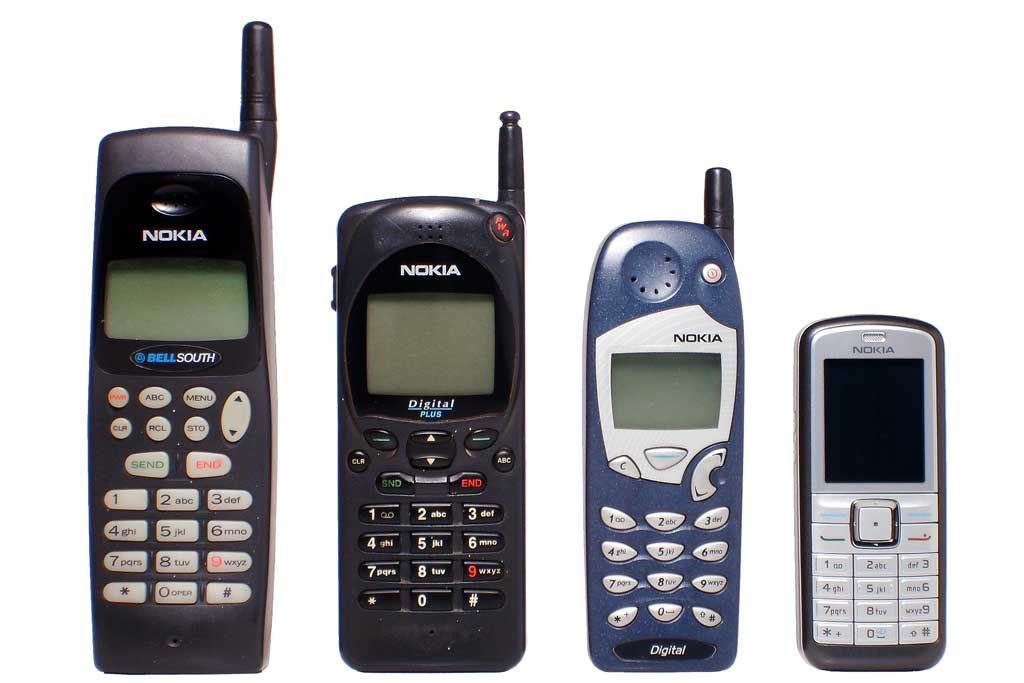From paper mill, to rubber company, to telecom giant, illumy takes a look at the fascinating history of Nokia, and answers the big question: “Is Nokia still around?”
The Early Years
Yes you read that correctly. Nokia really started as a paper mill. We were just as confused. Let’s explain:
The company’s origins trace back to 1865 when Fredrik Idestam established a wood pulp mill in Tampere, in the southwest of Finland, then part of the Russian Empire. In its early days, the operation was focused on manufacturing paper, marking the start of Nokia as a business entity. The Nokia name comes from the town of Nokia, located near the Nokianvirta River, where Idestam opened a second mill in 1868 eventually forming the the company with friend Leo Mechelin in 1871.
Apparently dealing with paper all day can leave a company feeling a bit… flat. So, in the late 19th and early 20th centuries enter the rubber industry. The expansion into rubber products started with the founding of Finnish Rubber Works (Suomen Gummitehdas) in 1898, which later merged with Nokia in the 1920s. Finnish Rubber Works used the Nokia brand for its products, including rubber boots, which became well-known.
And if paper and rubber weren’t enough, the company made a move into electronics and cable manufacturing with the establishment of Finnish Cable Works (Suomen Kaapelitehdas) in 1912. This company specialized in the production of telephone, telegraph, and electrical cables. Like Finnish Rubber Works, Finnish Cable Works would eventually become part of the larger Nokia Group.
Ok so now this is starting to make a bit more sense. The path from pulp to phones was not a linear one.
The Shift Towards Telecommunications
Nokia rode the paper, rubber, and electronics train all the way into the mid-20th century. The shift towards telecommunications began in the late 1960s and early 1970s when Nokia started to invest in the telecommunications infrastructure in Finland, laying the foundation for future success in the mobile phone market. In the 1970s and 1980s, Nokia developed the Nokia DX 200, a digital switch for telephone exchanges, which became a significant success and marked Nokia’s firm commitment to the telecommunications sector.
In the 1980s, Nokia produced the Mobira Senator car phone, its first mobile phone. However, it was the launch of the Mobira Cityman in 1987, one of the first handheld mobile phones, that symbolized Nokia’s growing prominence in the mobile phone industry. The Cityman’s popularity, particularly in the Soviet Union after then-leader Mikhail Gorbachev was photographed using one, showcased Nokia’s international reach.
The Golden Age of Nokia
Ah, the 1990s and 2000s—the era when Nokia wasn’t just a phone manufacturer; it was a cultural icon. Picture this: The internet was just taking off, boy bands ruled the airwaves, and if you wanted to be anyone at school or the office, you needed a Nokia phone in your pocket. This was the time when Nokia phones were the absolute rulers of the mobile world, a golden age of sorts, where the company wasn’t just ahead of the curve; they were drawing the curve!
The Rise to Stardom
It all started with the Nokia 1011 in 1992, which wasn’t just a phone; it was a statement. It was Nokia’s first foray into the GSM market, and it set the stage for what was to become a telecommunications revolution. But let’s be real, the real game-changer came in the form of the Nokia 3310 in 2000. This wasn’t just a mobile phone; it was the mobile phone. Durable, reliable, and sporting a battery life that could outlast some species of small rodents, the 3310 was the epitome of what mobile phones should be. It even came with Snake, a game so addictively simple that it probably deserves its place in the cultural history books.
Dominating the Market
During the 1990s and into the 2000s, Nokia was the undisputed king of the mobile phone market. Their strategy was simple yet brilliant: produce phones that were durable, user-friendly, and equipped with features that people actually wanted. Phones like the 3210, 6110, and later the N95 were not just pieces of technology; they were personal statements, fashion accessories, and lifelines to the rest of the world.
Nokia’s marketing was also something to behold. Remember the iconic ringtone and the slogan “Connecting People”? That wasn’t just a catchy phrase; it was a mantra that Nokia lived by. They understood the power of connection, and they delivered it in spades, right into the palms of our hands.
The Symbian Era
And let’s not forget about Symbian. In a time when the word “smartphone” was just entering the lexicon, Nokia was already there with its Symbian OS. This was the era of the Nokia Communicator and the N series, devices that were so far ahead of their time that they could probably have run a small lunar colony. These were phones that could do it all—email, web browsing, and even multimedia. The Communicator was the first phone with a full QWERTY keyboard. It was like having a Swiss Army knife in your pocket, but instead of a tiny scissors and screwdriver, you got the internet and a camera.
The Cultural Impact
Nokia’s dominance wasn’t just about the numbers; it was about the impact it had on our lives. These were the days of customizing your phone with funky covers and ringtones. Nokia was the global leader of personal expression.
And let’s not forget Snake. If you were around in the late ’90s or early 2000s, remember when “Hey, can I play Snake on your phone?” was a perfectly reasonable question to ask? Whether you were in the middle of a boring class, a long commute, or just hanging out with friends. Before the era of smartphones and app stores, Snake was the pinnacle of mobile gaming. It turned the Nokia handset, primarily a tool for communication, into a gaming console that fit snugly in your pocket.
A Nokia phone was more than just a gadget; it was a companion, a way to show the world who you were. It was the dawn of mobile communication as we know it, and Nokia was leading the charge with a flamboyant flair only they could pull off.
Nokia vs. Blackberry
In the early 2000s, the mobile phone landscape was witnessing a tectonic shift. This was an era before the full touchscreen revolution, a time when smartphones were largely defined by their physical keyboards and enterprise capabilities. In this context, Nokia and BlackBerry (then known as Research In Motion, or RIM) emerged as fierce competitors, each aiming to dominate the rapidly growing smartphone market.
The competition between Nokia and BlackBerry was fierce, with both companies vying for a larger share of the business and enterprise market. Nokia leveraged its global distribution and brand strength, while BlackBerry counted on its entrenched position in North America and its reputation for security and efficiency.
One of Nokia’s key advantages was its Symbian operating system, which, despite its challenges in the consumer market against iOS and Android, offered a wide range of applications and flexibility for business users. Nokia’s integration of Microsoft Office applications and VPN capabilities aimed to make its E-series devices more appealing to professionals.
Both companies made missteps in strategic decisions responding to this shift. BlackBerry doubled down on its existing user base, slow to innovate beyond its traditional strengths. Nokia, on the other hand, was dealing with power struggles and internal conflicts, and the Symbian platform was increasingly seen as outdated. The company’s later move to adopt Windows Phone also put it at a disadvantage, as it was competing against the rapidly growing app ecosystems of iOS and Android.
Read about The History of the Blackberry Phone
The iPhone Effect
Then one day, seemingly out of nowhere, it happened. Nokia was no longer cool. The change didn’t happen overnight but was a gradual process that began in the mid-to-late 2000s. Nokia, once the undisputed king of the mobile world, started to lose its cool factor and market dominance with the advent of smartphones, particularly after the introduction of Apple’s iPhone in 2007 and the subsequent rise of Android-powered devices.
Apple’s iPhone radically changed perceptions of what a mobile phone could do. It wasn’t just a phone; it was a sleek, touchscreen interface with internet capabilities, a music player, and an app store ecosystem that turned it into a mobile computing device. The iPhone’s launch in 2007 signaled a shift towards software-driven devices, focusing on user experience and apps. Nokia, with its hardware-centric approach and reliance on the Symbian OS, struggled to match this new paradigm. The iPhone was the next big thing, and the epitome of cool—a status symbol—while Nokia’s offerings began to feel outdated in comparison.
The Rise of Android
The introduction and rapid adoption of Google’s Android OS further compounded Nokia’s challenges. Android offered an open, customizable platform that quickly caught up with and surpassed Symbian’s capabilities. Manufacturers like Samsung, HTC, and later Huawei leveraged Android to produce smartphones that appealed to a broad range of consumers, offering both high-end and affordable models. This diversity and the rapid pace of innovation on the Android platform made Nokia’s phones seem less appealing to tech-savvy consumers and those looking for the latest and greatest in mobile technology.
Nokia’s failure to respond to these challenges quickly with new product lines didn’t help. While the company did eventually embrace Windows Phone as its primary smartphone OS in a strategic partnership with Microsoft in 2011, the move was perceived as too little, too late. The Windows Phone platform itself struggled to attract app developers and gain significant market share, leaving Nokia’s new Lumia line of smartphones at a disadvantage compared to iOS and Android devices.
Perception and Market Dynamics
The perception of Nokia as “un-cool” was not just about technology but also about brand perception and market dynamics. As consumers increasingly equated smartphones with social status, entertainment, and personal expression, Nokia’s strengths in durability, battery life, and call quality became less visible or valued. The brand, once synonymous with innovation and reliability, was now seen as behind the times.
The Microsoft Partnership
By 2010, it was clear that Nokia’s Symbian platform was unable to keep pace with the innovations and user experiences offered by iOS and Android. Nokia’s leadership recognized the lack of innovation and the need for a dramatic shift in strategy to regain its footing in the smartphone market. Meanwhile, Microsoft was looking to expand the reach of its newly launched Windows Phone OS, which was designed to offer a unique and user-friendly interface distinct from the competition but was struggling to capture market share.
In this context, the partnership was an attempt to leverage each company’s strengths: Nokia’s global brand recognition, hardware design, and manufacturing capabilities, and Microsoft’s software, services, and developer ecosystem. Nokia committed to adopting Windows Phone as its principal smartphone strategy, effectively making it the flagship hardware partner for Windows Phone.
The Impact of the Partnership
The announcement of the partnership was met with mixed reactions. On one hand, it was seen as a bold move that could give both Nokia and Microsoft a fighting chance in the smartphone wars. On the other hand, skeptics questioned whether the alliance would be enough to challenge the dominance of iOS and Android, especially given the head start those platforms had achieved.
Nokia launched several smartphones under the Lumia brand, showcasing the capabilities of Windows Phone with its distinctive Live Tiles interface, integration with Microsoft services like Office and OneDrive, and a focus on camera technology. Devices such as the Lumia 920 were praised for their build quality, innovative PureView camera technology, and distinctive design.
Despite the initial optimism, the partnership faced several challenges. The Windows Phone platform suffered from a “chicken and egg” problem: developers were hesitant to create apps for a platform with a small user base, and consumers were reluctant to adopt a platform with fewer apps than iOS or Android. This app gap proved to be a significant hurdle for Nokia’s Lumia devices, as the lack of popular apps and services made them less appealing to potential buyers.
Additionally, the mobile market continued to evolve rapidly, with competitors not only improving their hardware but also significantly enhancing their ecosystems and user experiences. Despite the quality of its devices, Nokia struggled to regain significant market share.
In September 2013, Microsoft announced its intention to acquire Nokia’s Devices and Services division for over $7 billion, effectively bringing Nokia’s smartphone era to an end. This acquisition marked the sad conclusion of Nokia’s attempt to recapture its leading position in the smartphone market.
Life after Cell Phones
Following the acquisition, Nokia underwent a significant transformation, focusing on its remaining businesses and exploring new opportunities. Defying all odds, Nokia managed to reinvent itself with a new brand identity as a major player in the telecommunications industry, demonstrating its resilience and capacity for innovation. Their market cap today is worth over $20 billion USD. Here are some of the things Nokia concentrated on post-acquisition:
1. Network Infrastructure and Services
Nokia refocused its efforts on its network infrastructure and services business, which was already a significant part of its operations. Nokia Networks, the company’s telecom equipment and services division, became its primary business focus. The division provides a wide range of products and services for telecommunications operators, including everything from mobile broadband to fixed networks.
2. Technologies Division and Patent Licensing
Nokia also focused on its Technologies division, which manages one of the industry’s broadest and strongest portfolios of patents. The division concentrates on licensing these patents and technologies to other companies, leveraging Nokia’s extensive R&D investments over the years. This includes not only mobile communications patents but also innovations in areas such as digital health and virtual reality.
3. Alcatel-Lucent Acquisition
In a move to further strengthen its position in the network equipment market, Nokia announced the Alcatel-Lucent acquistion in April 2015. This acquisition, completed in 2016, also included Bell Labs and significantly expanded Nokia’s portfolio in IP networking, cloud services, and wireless infrastructure, making it one of the world’s leading providers of network technology and services. This move was strategic in positioning Nokia as a key player in the global deployment and development of 5G technology and infrastructure.
4. Expansion into Digital Health
For a brief period, Nokia ventured into the digital health industry. In 2016, it acquired Withings, a French company specializing in health-focused wearables and digital health products. Nokia aimed to leverage its technology and expertise in the growing digital health market. However, this foray was short-lived, as Nokia sold the digital health business back to Withings’ co-founder in 2018, acknowledging that this area was not core to its long-term business strategy.
5. Nokia-Branded Smartphones Return
Although Nokia sold its mobile phone business to Microsoft, it found a way back into the smartphone market through a brand-licensing model. In 2016, HMD Global, a company founded by former Nokia executives, acquired the rights to design, manufacture, and sell Nokia-branded smartphones and tablets. This agreement allowed Nokia-branded mobile devices to re-enter the market, running Android, and marked Nokia’s indirect return to the consumer electronics market. It’s worth noting that while Nokia licenses its brand to HMD Global, it does not own HMD nor is directly involved in the manufacturing or distribution of these devices.
Final Thoughts
In recent years, Nokia has solidified its role as a key provider of essential technology and infrastructure for the digital and telecommunications industries. By focusing on network infrastructure, 5G deployment, and innovation in telecommunications, Nokia has navigated past challenges to remain at the forefront of the industry, continuing to shape the future of global connectivity and digital services.
Nokia’s history, from its humble beginnings to the present day, represents a remarkable saga of technological advancement and innovation. From a Finnish company processing pulp to a mega-powerhouse of mobile phones, a fall from grace, and a resurgence in telecom Nokia is still alive and well. However, for those of us who remember the heyday of Nokia, it was a time when they weren’t just making phones; they were crafting the future, one mobile device at a time. Owning a Nokia phone made you part of an exclusive club that was, quite literally, connecting the world.
Photo by Jorge Barrios


